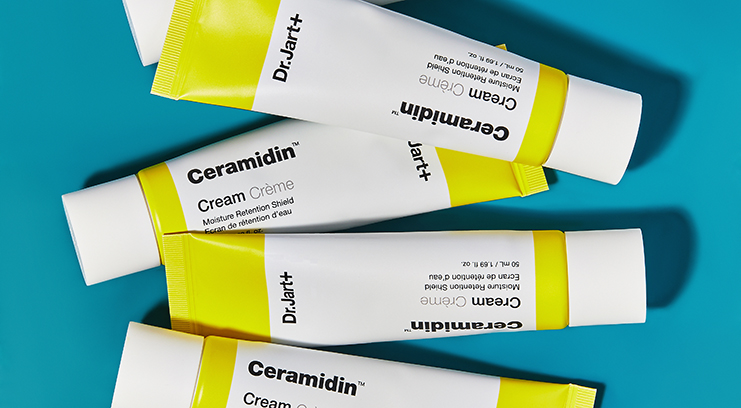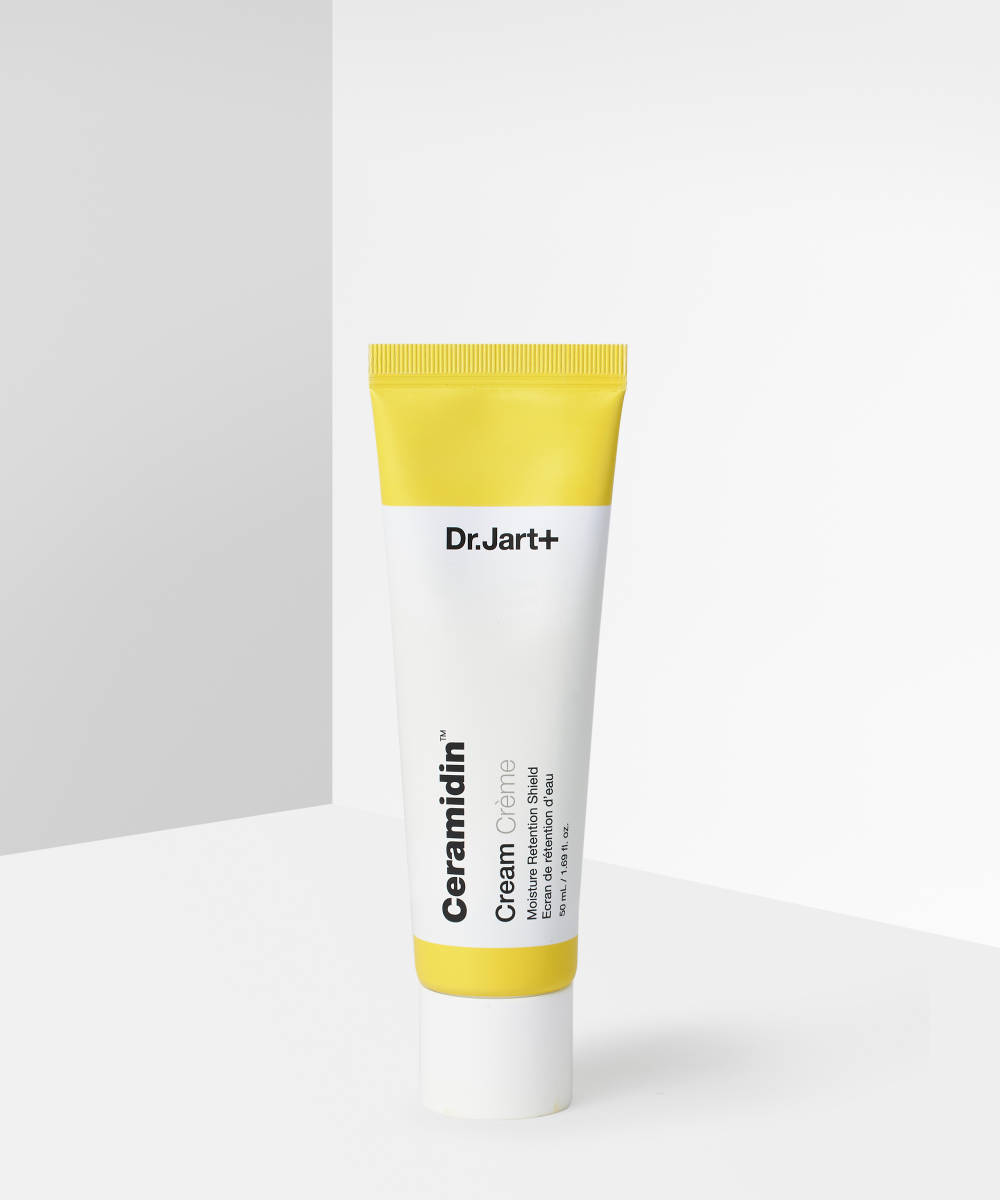We all know that retinol can work magic on skin – it stimulates collagen, boosts cell turnover and reduces sebum production, so whether you have acne, fine lines, pigmentation, exposed pores, or dull skin, you can reap the benefits of the derm-approved ingredient.
Sound too good to be true? It kind of is, because retinol is not without its side effects and its magical results do come at a price. Namely, increased risk of dry and irritated skin. “Retinols initially have an exfoliating action and may result in some degree of redness, soreness, and peeling…which can compromise the barrier function of the skin,” says Dr Yusra, a London-based medical director. “It’s important to always follow on and moisturise with a non-occlusive hydrating moisturiser to reduce the irritation and keep the barrier function of the skin strong.” Luckily, I’ve discovered just the moisturiser for the job…
Your new secret weapon against dry skin and retinol irritation? Dr Jart’s Ceramidin Cream. Its thick, buttery texture ticks all the necessary boxes that apply when choosing a moisturiser to use with retinol. It’s free from exfoliants, rich in humectants, and was formulated specifically to combat dryness, itching, flaking, and redness – which makes it perfect for targeting retinol-induced irritation. According to Dr Yusra, you should look for humectants (like hydromanil, hyaluronic acid, and glycerin), which pull in moisture and hold it in your skin – and can be found in Ceramidin Cream. The star ingredient is, of course, ceramides – fat-based molecules which are naturally found in skin and help to retain moisture by reinforcing the skin barrier. “Moisturisers with ceramides are particularly beneficial in managing dryness and irritations” Dr Yusra explains, “they strengthen the barrier function of the skin, keeping it plump and preventing water loss from the outermost layers, which is especially important when it comes using retinols”.
The nourishment provided by this cream gives instant relief from the symptoms associated with retinol – for me, it starts with redness and itching, and leads to rough, flaky patches of dry skin. All of which are kept at bay when I use this twice daily. It’s thick enough to use as a night cream, but also melts into skin so smoothly that you can just as easily use it in the daytime and layer it under makeup.
Regardless of your routine, you should always combine your retinol with something hydrating and nourishing. When I increase the strength of my retinol I like to do a “retinol sandwich” where I layer moisturiser underneath and on top of my retinol serum. This is a super useful technique if you’re new to retinol or are concerned about your skin’s sensitivity.
If you have particularly sensitive skin, Dr Yusra recommends buffering the retinol by mixing it with moisturiser to reduce the penetration until the skin develops tolerance, while anyone with inflammatory skin conditions should avoid the ingredient altogether. “Those with eczema or rosacea should stay away from retinols,” Dr Yusra says. “As these skin types tend to already have a weak or compromised barrier function.”


